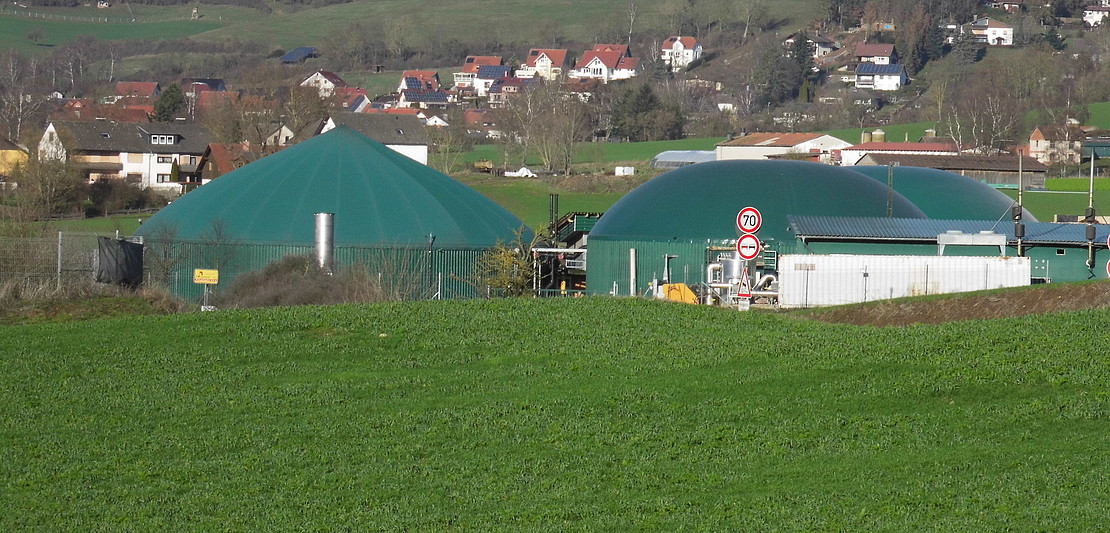This page contains automatically translated content.
How bioenergy villages succeed: guide online
 Image: Marianne Karpenstein-Machan.
Image: Marianne Karpenstein-Machan.The focus of the research project "Innovative concepts and business models for sustainable bioenergy villages - climate-friendly, democratic, citizen-oriented" is on sustainable business fields and the long-term economic operation of bioenergy villages. The University of Kassel with its departments of microeconomics and empirical energy economics and solar and systems engineering and the University of Göttingen with the Department of Cartography, GIS and Remote Sensing of the Institute of Geography are involved. For many bioenergy villages, the EEG compensation will expire in the years 2025 to 2030 and the development of new business areas is necessary in order not to endanger the economic viability of the village projects and supply of heat customers. The local heating networks in the bioenergy villages currently supply about 25,000 households with heating and hot domestic water.
How can bioenergy villages continue to operate successfully?
Seven thematic blocks - Future electricity marketing, Making local heating networks fit, Using residual materials, Alternative energy crops, Optimizing recyclable materials in cycles, Integrating other renewable energies - provide orientation and future prospects for bioenergy villages.
The key points of the guide are:
- Against the backdrop of the climate, environmental and gas crises, there is political and societal pressure for action to push for a sustainable, "grandchild-friendly" energy supply largely from domestic resources;
- The expansion of heating networks and their optimization (minimizing heat losses) creates security of supply with affordable heat and accelerates a sustainable heat transition in rural areas;
- New business fields such as marketing of electricity via own power lines, feeding of biomethane into the natural gas grid or production of fuel and marketing in own farm filling station must be in line with the local heat supply in bioenergy villages. Alternatives to the heat source cogeneration plant such as solar thermal energy, wind power for heat generation (power to heat) or pyrolysis gas open up scope (surplus of biogas) for bioenergy villages to implement these business areas in addition to the local heat supply to heat customers;
- The new technology "pyrolysis" will play an important role in the near future in the long-term storage ofCO2 in the form of plant carbon. The expansion of this technology is particularly advantageous due to the associated opportunities for the use of residual and waste materials, the use of heat that can be decoupled, andCO2 sequestration;
- Biogenic residual and waste materials as well as farm manure (stable manure, slurry) will increasingly replace energy crops from the field and be used as input materials in biogas plants. These input materials have a high greenhouse gas reduction potential and can gain their economic viability in the business field of "advanced fuels" throughCO2 quota trading;
- Alternative energy crops as permanent crops, such as through-grown silphia or perennial wild plant flowering mixtures, increase biodiversity, contribute to soil and water protection, and feed bees in late summer and fall when they are in full bloom. Conservation and use are not contradictory here.
The bottom line for bioenergy villages:
There will probably not be a silver bullet for all bioenergy villages. From the bouquet of possible business fields, the bioenergy villages can choose the ones that suit them best. All the recommendations for action discussed have advantages and disadvantages and involve certain entrepreneurial risks that must be carefully weighed up by the villages.
The conclusion to policymakers:
Adaptations to new substrates and technologies require time and funding. This requires a political framework and subsidies that support cooperative and voluntary activities rather than hindering them. Only in this way can the "participation" of the population be achieved.
The project was funded by the German Federal Ministry of Food and Agriculture (BMEL). Further information can be found at www.energiewendedörfer.de and FNR database funding codes 22405217 and 22405218.